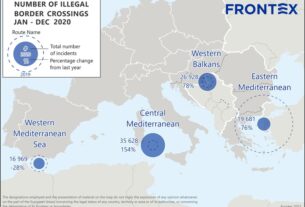- Households’ financial investment increased at broadly unchanged rate of 4.0% in third quarter of 2021
- Non-financial corporations’ financing increased at higher rate of 2.5% (after 2.3% in second quarter of 2021)
- Non-financial corporations’ gross operating surplus increased at lower rate of 8.9% (after 30.3%)

Data for household financing, and financial and non-financial investment (Chart 1)

Chart 2. NFC gross-operating surplus, non-financial investment and financing
Households
The annual growth rate of household gross disposable income decreased to 3.5% in the third quarter of 2021 (after 4.8% in the previous quarter).[1] Gross operating surplus and mixed income of the self-employed increased at a lower rate of 4.0% (after 9.0%). Compensation of employees also grew at a lower rate of 5.6% (after 9.7%). Household consumption expenditure increased at a lower rate of 5.5% (after 14.1%).
The household gross saving rate in the third quarter of 2021 was 18.5%, compared with 19.0% in the previous quarter (calculated from four-quarter sums).
The annual growth rate of household gross non-financial investment (which refers mainly to housing) decreased to 16.8% in the third quarter of 2021, from 31.1% in the previous quarter. Loans to households, the main component of household financing, increased at a broadly unchanged rate of 4.1%.
The annual growth rate of household financial investment stood at a broadly unchanged rate of 4.0% in the third quarter of 2021. Among its components, currency and deposits grew at a lower rate of 6.1% (after 6.7%), while shares and other equity grew at a higher rate of 3.2% (after 2.9%).
The annual growth rate of household net worth increased to 6.6% in the third quarter of 2021, from 5.9% in the previous quarter, mainly driven by higher valuation gains in non-financial assets and continued growth of financial investment and valuation gains in financial assets. Housing wealth, the main component of non-financial assets, grew at a higher rate of 5.9% (after 4.5%). The household debt-to-income ratio increased to 97.0% in the third quarter of 2021 from 95.4% in the third quarter of 2020, as loans to households grew faster than disposable income.
Non-financial corporations
Net value added by NFCs increased at a lower annual rate of 8.1% (after 24.9%) in the third quarter of 2021. Gross operating surplus grew at a lower rate of 8.9% in the third quarter of 2021, from 30.3% in the previous quarter, and net property income (defined in this context as property income receivable minus interest and rent payable) was broadly unchanged. As a result gross entrepreneurial income (broadly equivalent to cash flow) increased at a lower rate of 8.1% (after 28.3%).[2]
NFCs’ gross non-financial investment increased at a lower annual rate of 14.8% (from 19.1% in the previous quarter)[3]. NFCs’ financial investment grew at a broadly unchanged rate of 4.6%. Among its components, loans granted increased at a higher rate of 6.2% (after 4.6%), while investment in shares and other equity increased at a lower rate of 1.9% (after 2.2%). Currency and deposits also grew at a lower rate of 6.3% (after 7.5%).
Financing of NFCs increased at a higher annual rate of 2.5% (after 2.3% in the previous quarter), as the growth rates of financing via loans (3.0%, after 2.3%)[4]and trade credits (8.9%, after 8.1%) increased. NFCs’ equity financing grew at a lower rate of 1.3% (after 1.6%), and the issuance of debt securities increased at a broadly unchanged rate (2.4%).
NFCs’ debt-to-GDP ratio (consolidated measure) decreased to 79.8% in the third quarter of 2021, from 81.8% in the same quarter of the previous year, as debt grew slower than GDP; the non-consolidated, wider debt measure decreased to 143.3% of GDP (from 143.8%).
ecb.europa.eu


















